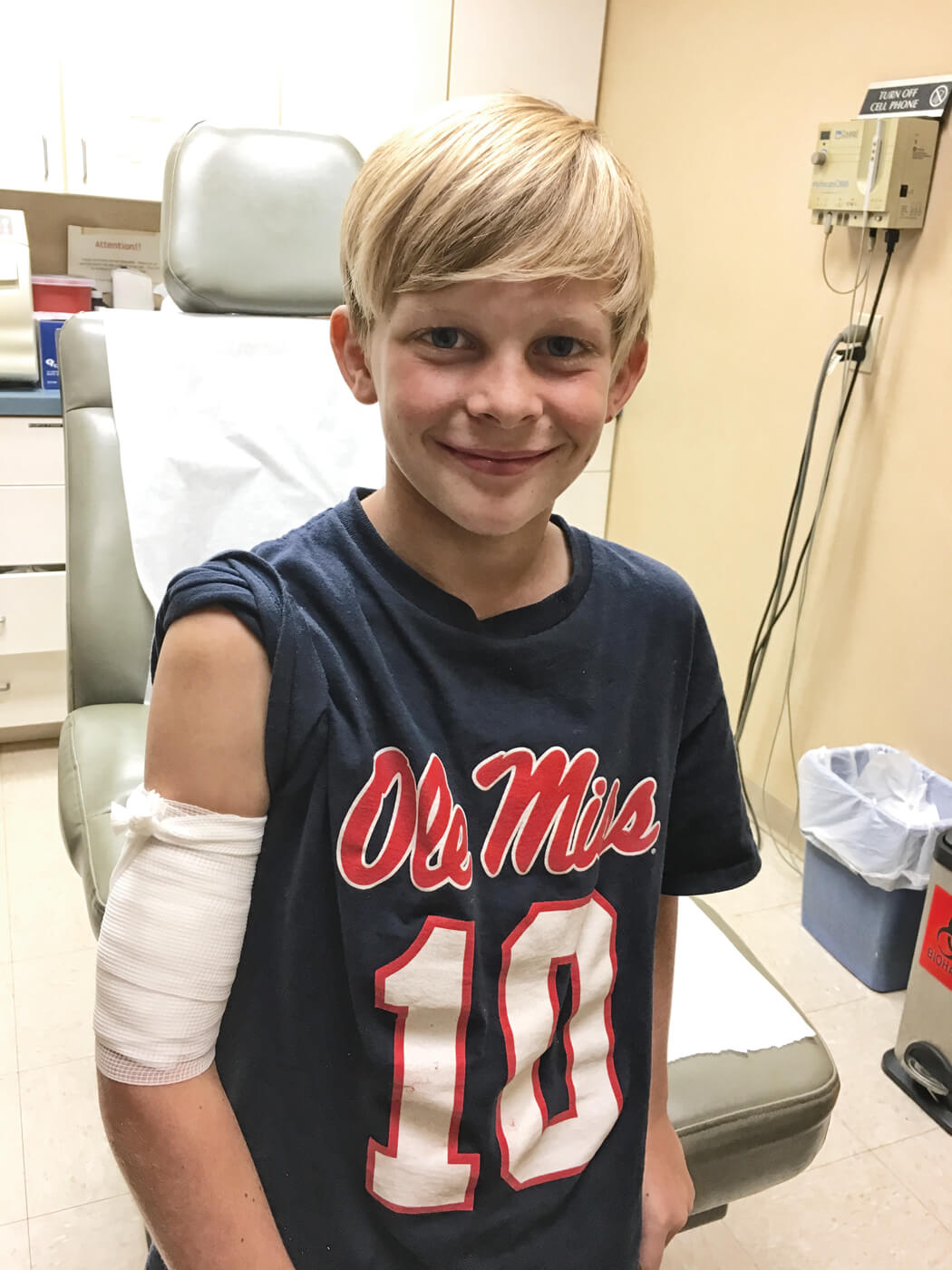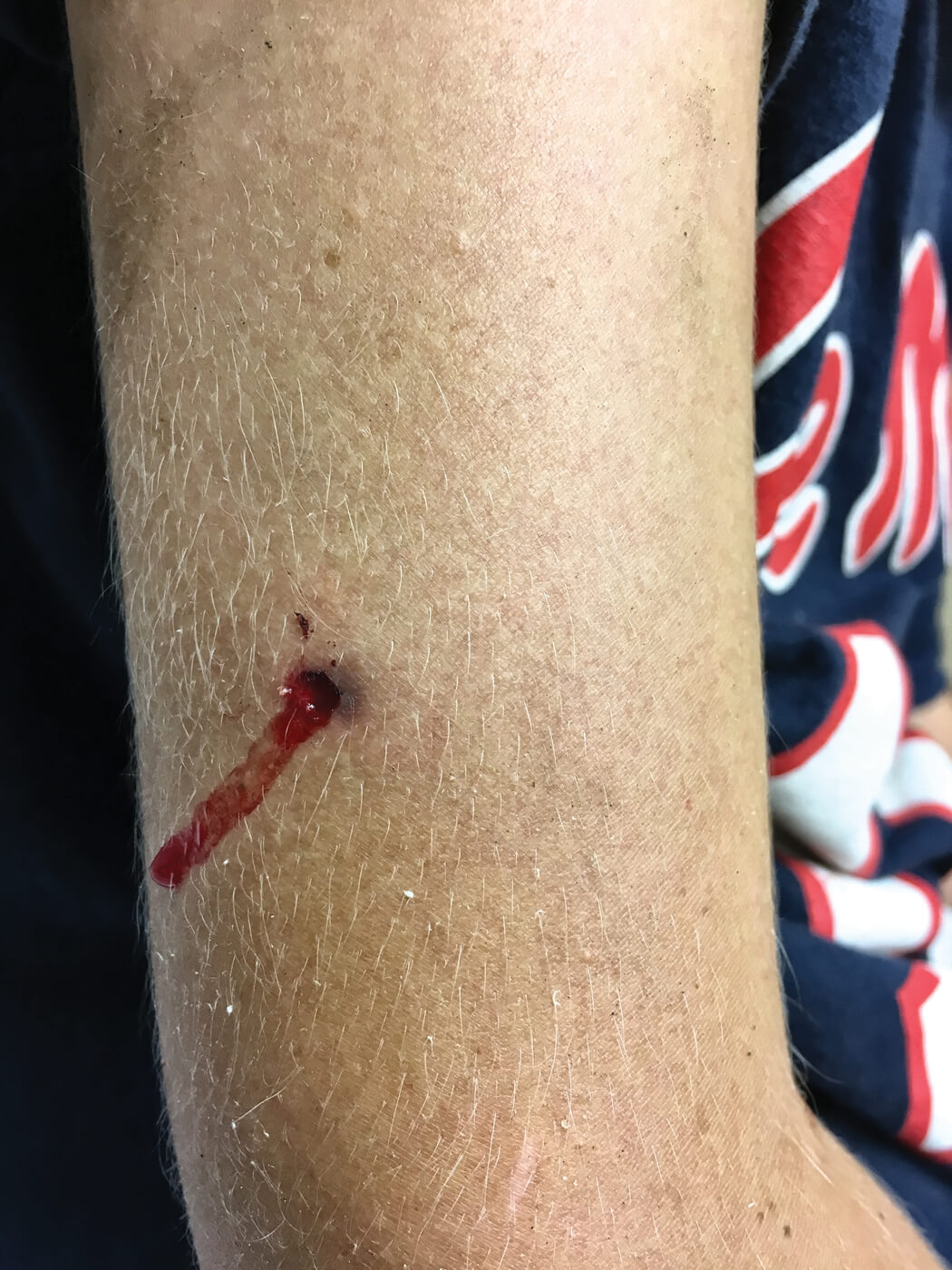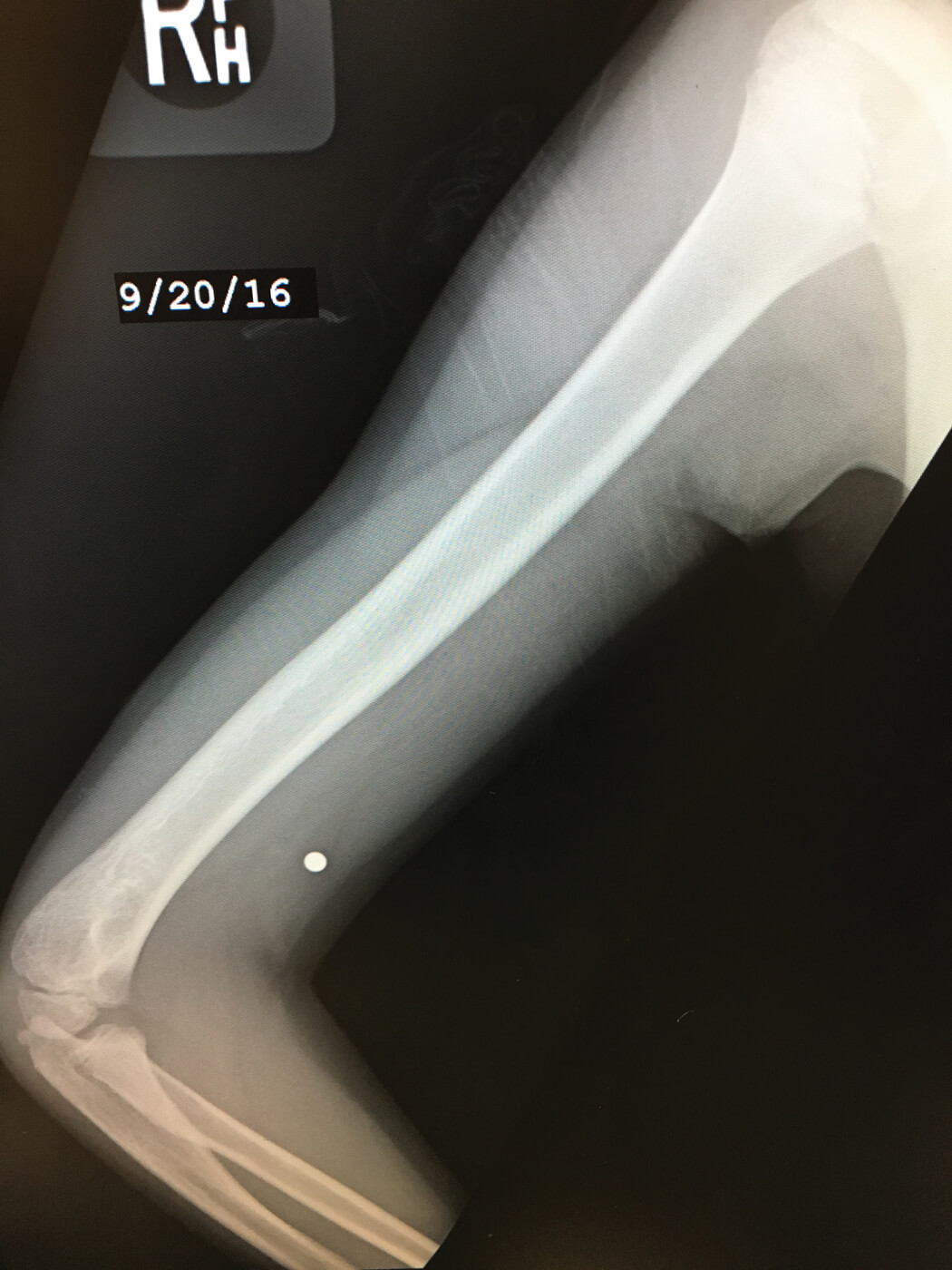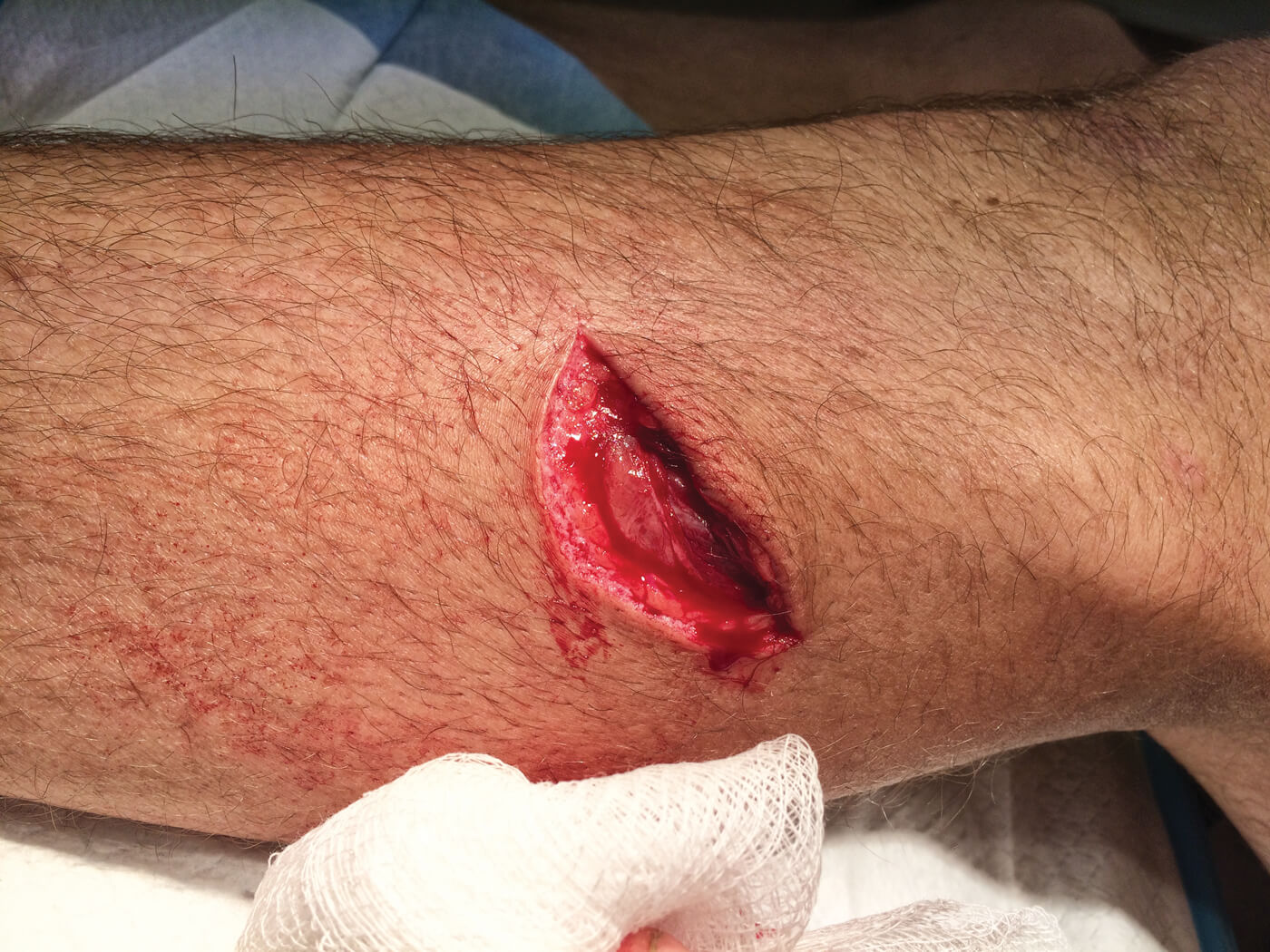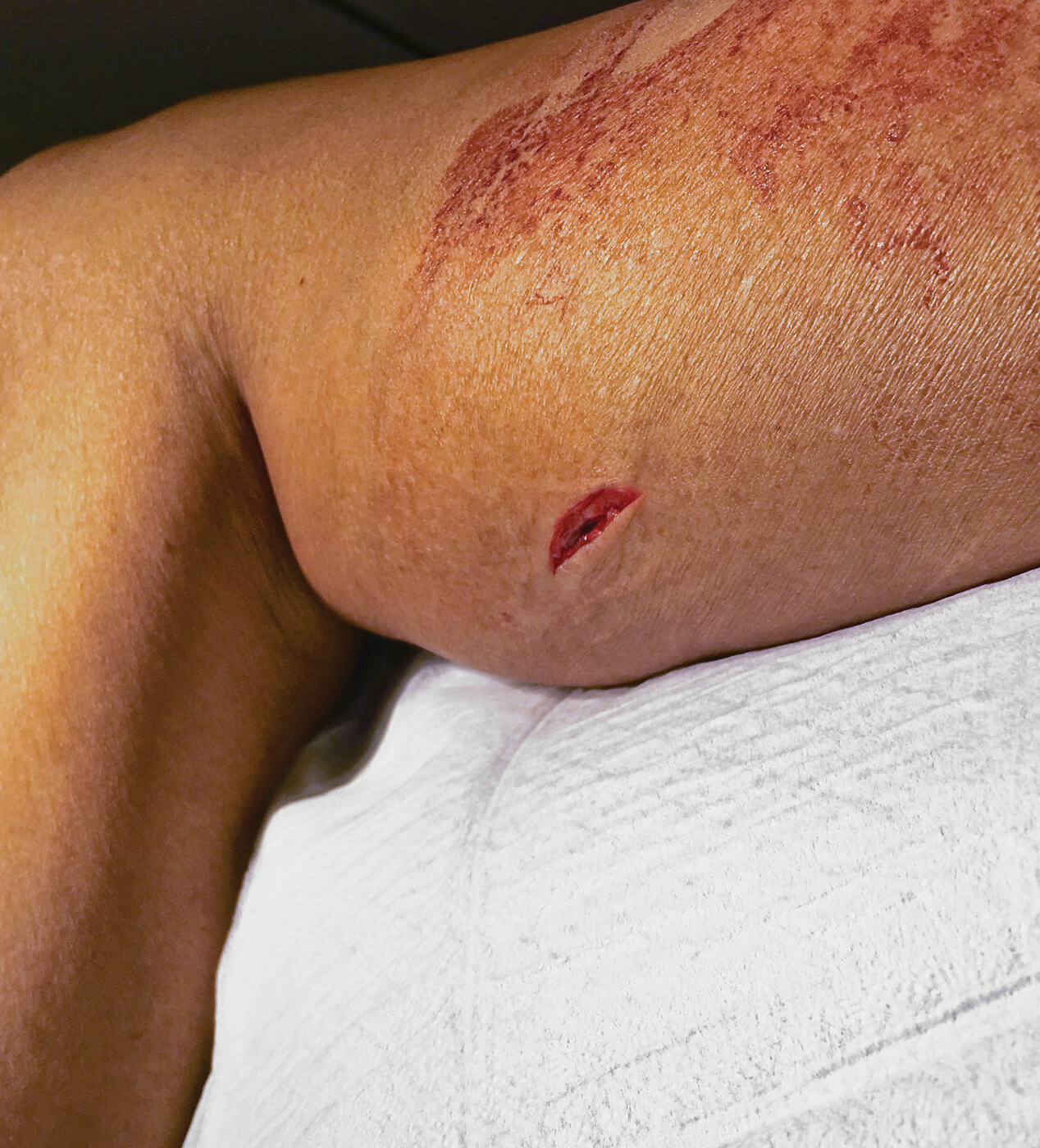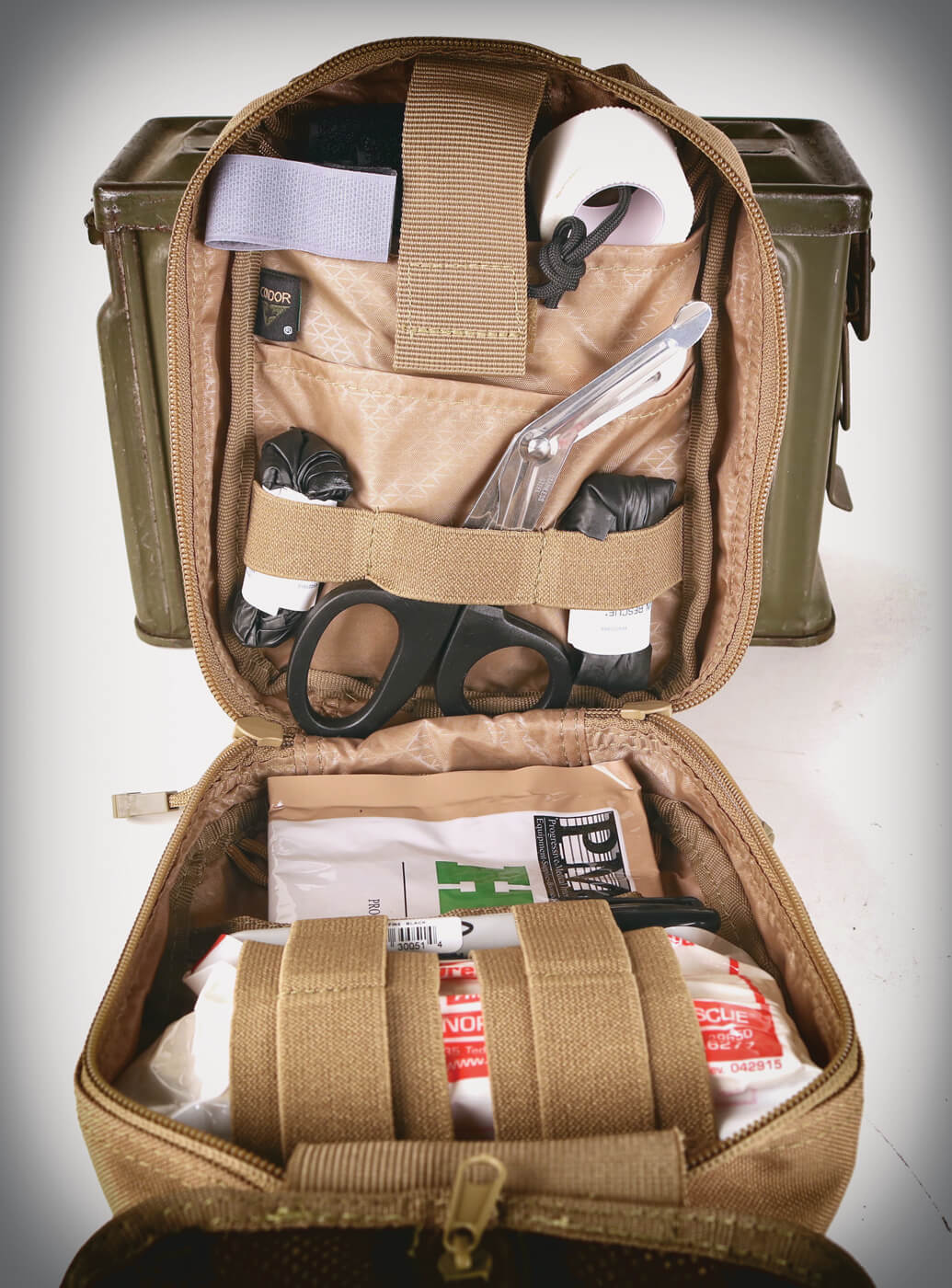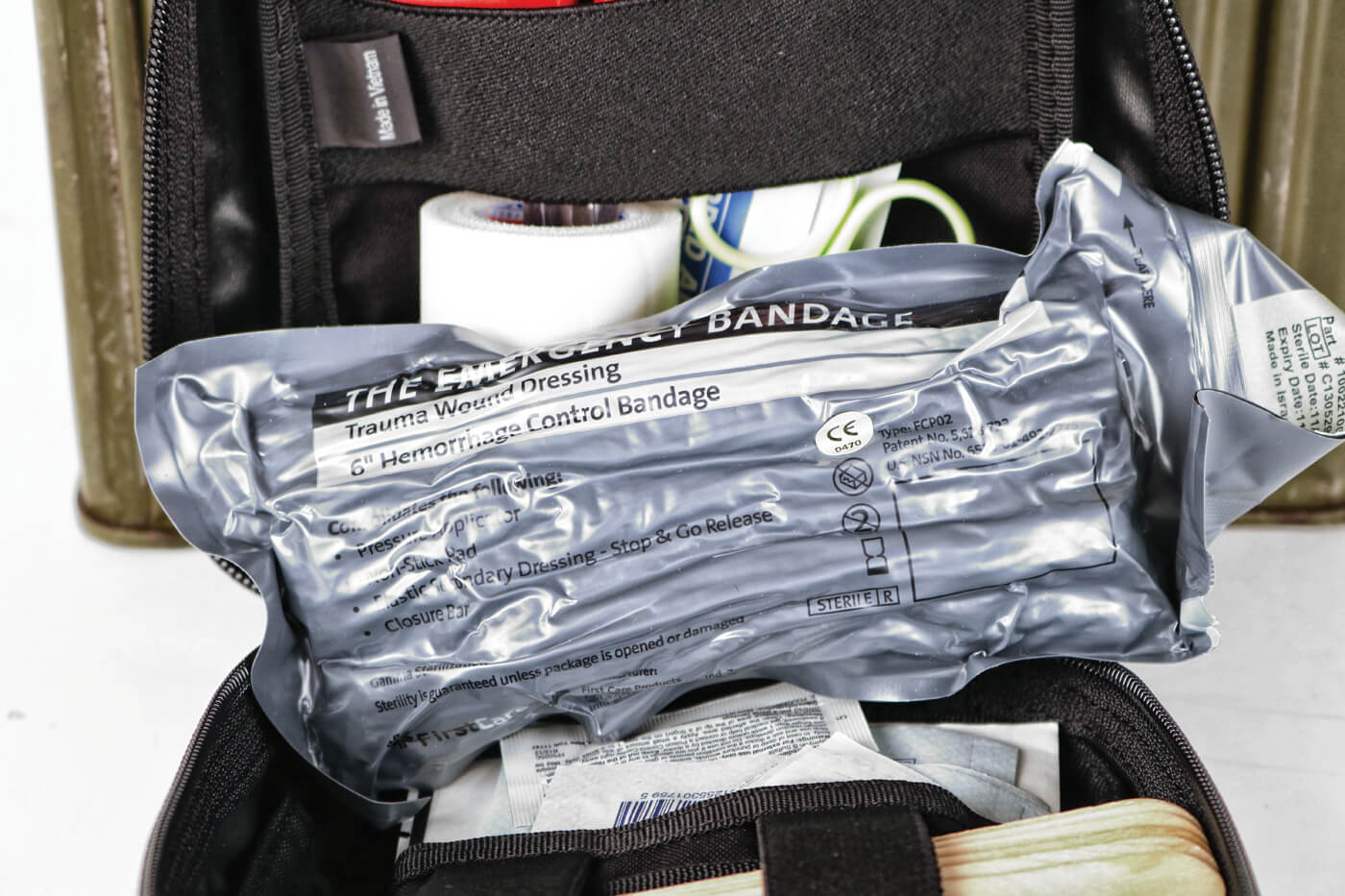Testosterone is the most potent poison known to man. It is not by random chance that 93 percent of the federal prison population is male.
As any woman will tell you,, most guys are infantile and self-destructive—sometimes for literally hours on end. As a result, men frequently hurt themselves.
Here’s an example. Our hero was an awesome, tow-headed, 9-year-old scamp out shooting up the countryside with a buddy and an air rifle pushing BBs. (We have all been there.)
Because of a moment’s inattention, this young man caught a round in the upper arm. The 4.5mm BB impacted the medial aspect of his right arm above the elbow, transited the breadth of his limb and came to rest, tenting the skin on the far side.
Once you have established that a wound of this sort has not damaged something critical, such as an eye, the liver or brain, the first order of business is to manage bleeding. In a field environment, this first aid typically starts with direct pressure. A penetrating trauma to an extremity usually responds well to a bandage and direct pressure.
You will need to address the details of where the projectile lies and whether or not it must be removed, but that will typically keep for the present. For starters, just wrap the wound tightly and resist the urge to take it off and look at the wound. As long as the bandage is not soaking through, just keep the pressure on until you have the opportunity to deal with it properly.
Make sure you can wiggle your digits downstream from the injury. You also need to make sure the major vessels are not disrupted. This involves checking that the fingers and toes are not getting dusky. Press on the nail beds, which should pink up again quickly when you release pressure.

INFECTION PROTECTION
Clostridium tetanus is a ubiquitous organism in soil. It is a cousin to Clostridium botulinum, the organism that produces botulism toxin, and they are, indeed, a malevolent mob. However, it still remains fairly tough to acquire a tetanus infection. In my medical career, I have only seen one (unfortunately, that man died). A tetanus shot protects you for a decade and is available at almost any medical clinic. If you are serious about prepping and survival, keep those tetanus shots up to date for yourself and your family.
Most conventional bullets will be hot enough to be sterile. However, the little patch of clothing and/or skin underneath the bullet’s impact will invariably be filthy. As a result, I always consider gunshot wounds to be contaminated and treat them accordingly with antibiotics.
As soon as you can, clean the wound the best you are able with soap and water and seek medical attention. Sometimes, projectiles are easy to remove with the most basic of gear. Other times, retrieval is hopeless, and they should be left alone. (In fact, shotgun pellets are notorious for creeping out of a wound decades after their arrival.)
LOCATION, LOCATION, LOCATION
Knife wounds can appear innocuous or downright ghastly. Sometimes, the benign appearance of the wound can belie the mischief lurking therein and might require more than basic first aid. A knife wound’s depth and its location typically determine its criticality.
Case in point: A man was cutting the steel straps off a cube of bricks at a construction site. The sharp end of the strap recoiled and popped him in the bend of his right elbow, leaving a roughly inch-long simple laceration in the skin. The problem was that the brick strap also split the antecubital vein lengthwise. This is the sizeable piece of plumbing from which phlebotomists typically draw your blood. The resulting blood flowed forth like a torrent. This is one of those circumstances for which a tourniquet really comes in handy.

It also helps to understand a little anatomy. Arteries are relatively high-pressure vessels that carry blood away from the heart. They are usually fairly deep. Veins are relatively low-pressure vessels that carry blood back to the heart. They can be fairly shallow. In this case, the man in question was remarkably fit, with very little body fat and a lot of muscle.
An improvised tourniquet on his upper arm was relatively ineffective in the field, because it was tough to compress his upper arm adequately to stem the venous return of the blood to the wound. I applied a makeshift tourniquet both above and below the wound and got the bleeding slowed down adequately to repair it.
However, keep in mind that you use a tourniquet either for a brief period or in a circumstance where losing the limb is better than bleeding out. It is a straightforward enough thing to improvise a tourniquet. I prefer the RATS (Rapid Application Tourniquet System). The RATS was designed by a U.S. Special Forces soldier and is both easy to use and remarkably effective. Practice with it in times of peace so you know how it works if you are ever called upon to use it for real. (After messily groping around during the case described above, I ordered a RATS for my treatment room at work.)

THE AMPUTATION CONUNDRUM
Wounds are gross. You need to get over that when it comes to first aid.
Take in a hearty meal, kick back with some after-dinner snacks, and fire up YouTube. Search for some particularly repugnant wounds or surgeries and scope them out until you can watch without feeling ill. The real world will be very different—once you add smells and the uniquely visceral sensations that go along with managing traumatic wounds—but video is a good place to start.
Here is another real-world example of a first aid case.
The day had been long, and the man was tired. He was working on a ladder, putting the final touches on a light fixture in a new home construction he was working on. The fixture was in a garage, so the ceiling was at least 12 feet high. He worked around the mechanism of the automatic garage door and used the open door as a shelf to hold his tools.
Shifting his weight slightly, he lost his balance and reached out reflexively to stop his fall. He grabbed the strapping that supported the garage door frame just above where it formed a V. The angled steel strapping acted like a guillotine and took the fourth and fifth fingers off his left hand as he fell. Needless to say, the wounds were neither clean nor tidy.
This would be shocking if it happened to you, no matter your profession. However, as is the case with any other emergency, don’t panic. Take a deep breath, analyze the situation, and take action to move in a positive direction: Find or make a bandage, apply pressure, and seek help.
BASIC FIRST AID GEAR

- BANDAGES: I like Israeli Battle Dressings. They are available on Amazon.com.
- SOMETHING TO IRRIGATE WOUNDS: Hydrogen peroxide is cheap and available anywhere. Dilution is the solution to pollution.
- RUBBER GLOVES: Wounds are messy.
- TRAUMA SHEARS AND/OR A DECENT KNIFE: You’ll need to get nasty clothing out of the way.
- ANTIBIOTIC OINTMENT: Over-the-counter Bacitracin and Neosporin are fine.
- HYDROCORTISONE CREAM: Because poison ivy sucks.
- TOURNIQUET: The RATS is a great one.
- FORCEPS/TWEEZERS: It’s more likely you’ll face splinters than bullets. Clean your tools with alcohol or peroxide before use.
- DUCT TAPE: Pull a few feet off the roll and form a compact roll. Use it in conjunction with a magazine to make a splint.
- SANDWICH BAGS: Use these for any severed digits. Alternatively, they can serve as improvised gloves in a pinch.
Echo-Sigma makes a good, pre-assembled individual first aid kit (IFAK) with plenty of “cool-guy” stuff. Take the gear out, and play with it enough to know where it is and how to use it.
GRAND SCHEME
If you get drilled through the chest in the middle of no place, you are clearly doomed. However, many to most modest traumatic injuries can be managed—or at least improved—with a little levelheaded attention and a little first aid knowledge. Accumulate some well-reasoned first aid gear and gain enough exposure to the gory aspects of trauma management to be of some utility in a crisis.
When faced with an injury, keep your head, never panic, and get to work.
Blackhawk! (800) 379-1732
Echo Sigma Emergency Systems (424) 241-3246
RATS Tourniquet (206) 851-0537
Editor’s note: A version of this article first appeared in the March 2017 print issue of American Survival Guide.



